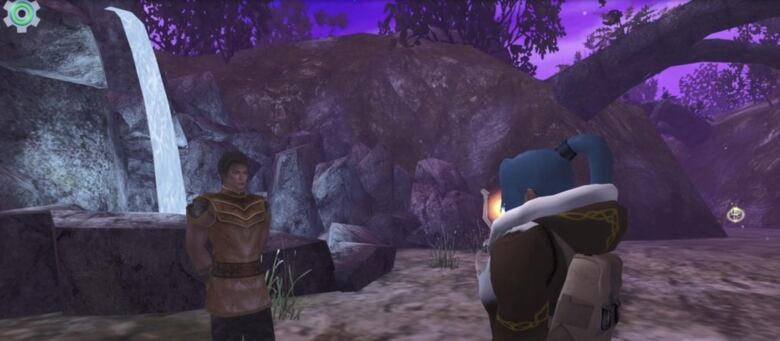How a fantasy video game aims to help youth in Nunavut with their mental health
[ad_1]
When Chelsea Singoorie was growing up in Pond Inlet, Nunavut, she found that talking about mental health was highly stigmatized. Now, she’s opening up the conversation with a video game designed for young people in the territory.
“The overall goal of the video game is to create more mental health tools that are culturally relevant,” she told As It Happens host Carol Off.
“The problem that we’re trying to address, I think, overall is to increase resiliency in communities … to encourage young people to seek alternative sources for mental health resources.”
Singoorie is community co-ordinator with the York University team designing the video game I-SPARX. In the game, players enter a fantasy world and complete levels while learning skills to deal with negative feelings.
Youth across Nunavut will be able to play I-SPARX online starting Dec. 4 as part of the research project.
The game itself was originally designed in New Zealand for Maori youth, but has since been adapted to include Inuit culture and Nunavut landscapes. Researchers at the University of Auckland found that the game was just as effective as face-to-face therapy.
In Nunavut, the video game is an opportunity to teach the life skills needed to deal with daily stress, says Singoorie.
In the game, the player must restore balance and light to a darkening universe by collecting “Power Gems.” As they do so, the game weaves in elements of cognitive behavioural therapy — a common form of talk therapy in which patients learn to curb unhelpful, inaccurate or negative thinking and develop practical coping skills.
“As [players] go through the different levels … they have to use the skill [they’re taught] in order to move on to the next level,” Singoorie said.
“They learn about negative feelings, and [they’re] associating these negative feelings with the activities that they’re doing and how they can potentially combat those negative feelings with alternative activities within their own communities.”

The I-SPARX team bills the game as an “e-mental health tool,” which provides an alternative resource when mental health support is difficult to access, especially for people living in isolated communities.
Nunavut is mostly made up of a small, remote towns with populations of fewer than 1,000 people, where mental health supports aren’t always readily accessible.
Over the last few years, the I-SPARX research team redesigned the video game through consultations with youth across Nunavut. They visited Pond Inlet, as well as Pangnirtung, Cape Dorset, Baker Lake and Cambridge Bay in 2018 to test the game and gather feedback.

Singoorie says a young person in Nunavut can play this game and learn concepts from CBT to help them understand themselves and cope better.
“When we were in one of the communities … we were working with two young people. They had mentioned that they had never learned these concepts before,” she said.
“One of the concepts is practicing deep breathing. Another concept is associating negative thoughts and changing [them], [recognizing] that you are not your thoughts.
“As they collect the gems in order to restore the power to the universe, that’s kind of how they go [from] start to finish.”
Culturally relevant design
While the original game showed a warm environment with palm trees and Maori imagery, I-SPARX looks and feels like the Canadian Arctic tundra.
Characters can be found in traditional Inuit clothing. The setting, from background to animals, are also more reflective of what the youth see in their everyday lives.

Players will also hear the languages spoken in Nunavut. Based on some of the feedback the team got from their trips, they incorporated Inuit symbolism and Inuktitut text into the game. There are also some English to Inuktitut translations and voice-overs performed by youth from the region.
Singoorie says it’s effective partly because it’s fun. She says kids who have played the game usually have a positive experience.
“They actually really enjoyed it. And it was really great to be able to work one-on-one with them,” she said.
Written by Mehek Mazhar. Interview produced by Katie Geleff.
[ad_2]
SOURCE NEWS
